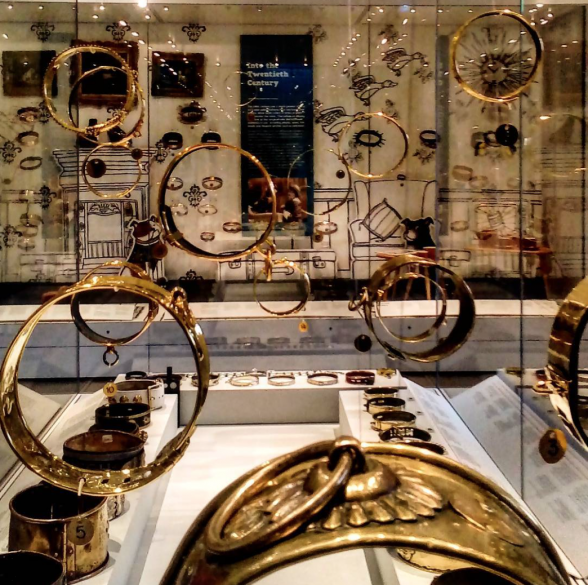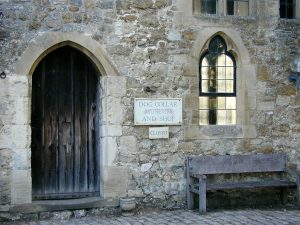
True story. When we purchased an antique wood ice box as newlyweds, the one person more baffled than we were delighted was the only nonagenarian in the family. The 90-something year old great grandmother remembered the non-mechanical icebox as a child. It was a common kitchen appliance, and hardly something one would put in the parlor. She was almost aghast.
We used ours as a liquor cabinet and received many compliments from our contemporaries.
What’s old is new again. Not long ago, we noticed that Lava lamps , rotary dial telephones, molded furniture in space age shapes, copper and other metal wall sculptures – all the elements of 1960s interior decoration – have gotten very popular. Like our elderly relative, we’re puzzled by the resurgence of this look. We didn’t much like it then, so we’re unimpressed now, but we’ve come to understand the sentiments a certain generation had about our icebox.
We segue into the commonplace becoming valuable. Back in 2016, a silver dog collar made in 1883 for a Scotch collie named “Help” was estimated to sell for up to $3,500 at a Bonhams sale of canine art and artifacts. Help had been a charity dog who frequented railroad stations with a piggy bank on his back to raise money for the children of railway workers who’d died on the job. After his death in 1891 at the age of 13, Help’s owner, John Climpson, beqeathed the silver collar to a friend. Somewhere along the line, the collar was sold to a family from California who’d bought it for about $85 from a London gallery in 1967.
If that family realized the profits of the Bonham’s sale, they made a 4.014% increase in their investment.
Dog collars have been around since the pre-dynastic era; development of this standard piece of equipment for a dog can be traced to the ancient Mesopotamian region. By the time of the Egyptians, collaring and leashing was standard.
The earliest collars worn by dogs owned by upper classes were ornate and made of fine linen or precious metal. Royalty even put gems on the collars. Dogs of the lower classes, however, wore collars most likely made of rope, cloth or (chuckle) – leather, what most of us use today. Some collars were adorned with bells, but putting a dog’s name on its collar isn’t a modern practice, it first appeared in ancient Egypt. In China and Japan, charms hung from dog collars as a way to ward off ghosts and evil spirits.

Collars become more refined, if not elegant, during the European Renaissance in Europe, and most accounts on the history of dog collars suggest that it was during the 18th century and into the Victorian Age that the height of design and decoration occurred.
Dog collars are of such interest that there is a Dog Collar Museum located in Leeds Castle in Kent, England. It the largest collection of its kind on public display anywhere in the world, and the collars in its collection span five centuries. It includes nearly 135 collars that were collected by Irish medieval scholar, John Hunt, and his wife, Gertrude.
To our knowledge, the oldest collar is a 15th century Spanish Mastiff’s collar, but there are pieces that range from 15th century German spiked iron collars to ornate applies to collars of the Baroque period.
We know some of our readers have visited the museum (over 500,000 dog lovers have made the trip) and we’d love to hear from you and see any photos you took.
The image of the dog collars was found on Pinterest and will happily be credited upon receipt of information. The photo of the exterior of the Leeds Dog Collar Museum was taken by PaulLaskin and is licensed under CC BY 2.0 Creative Commons.
